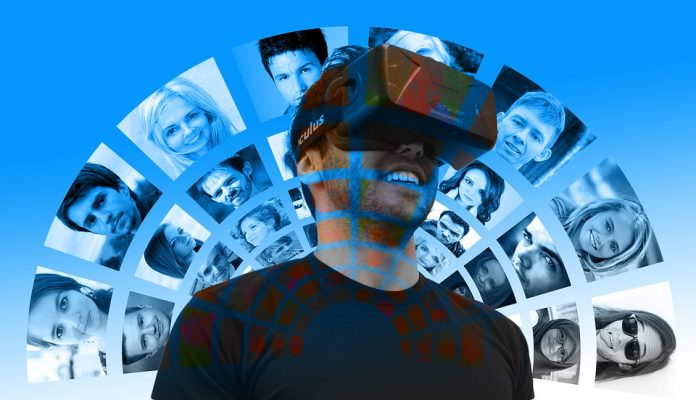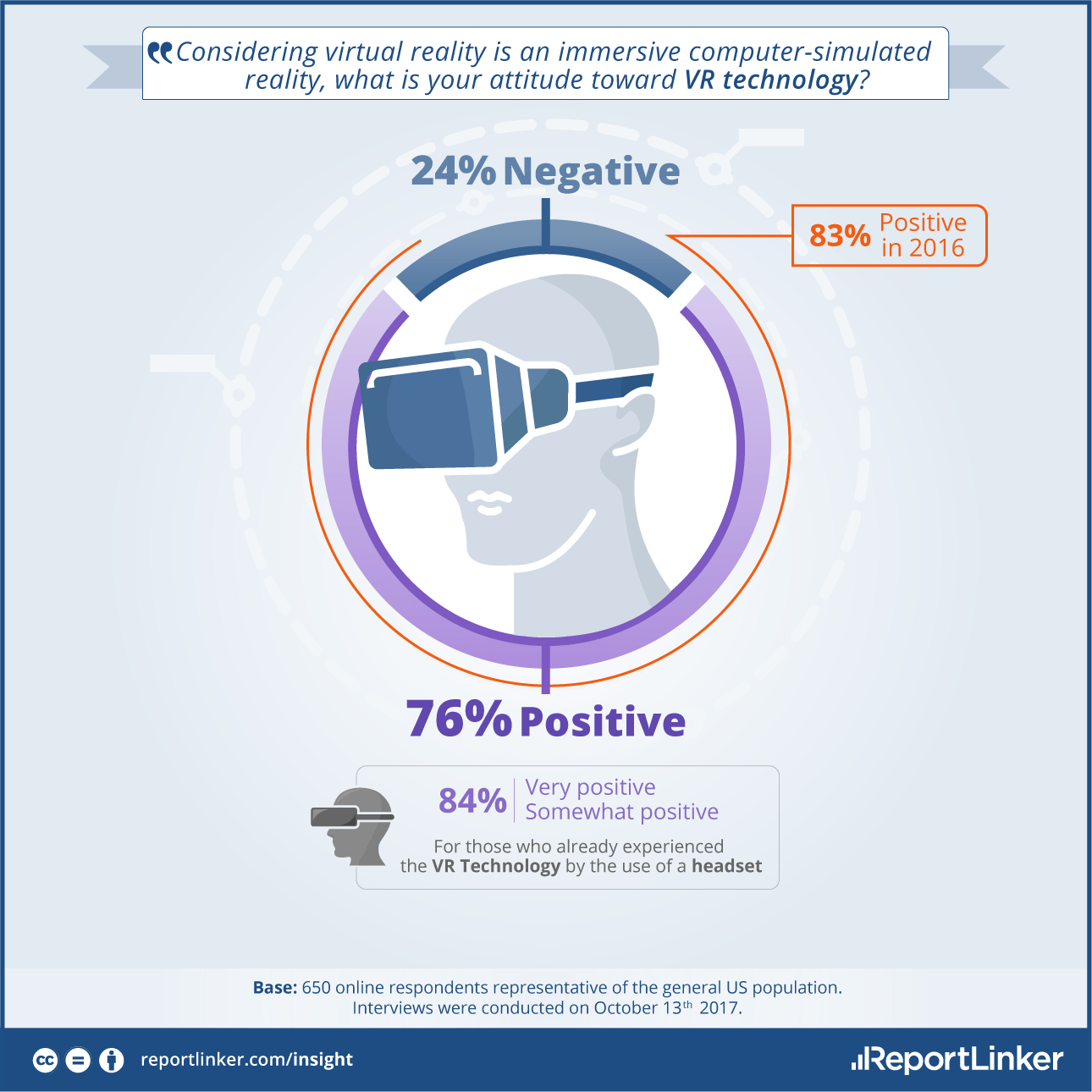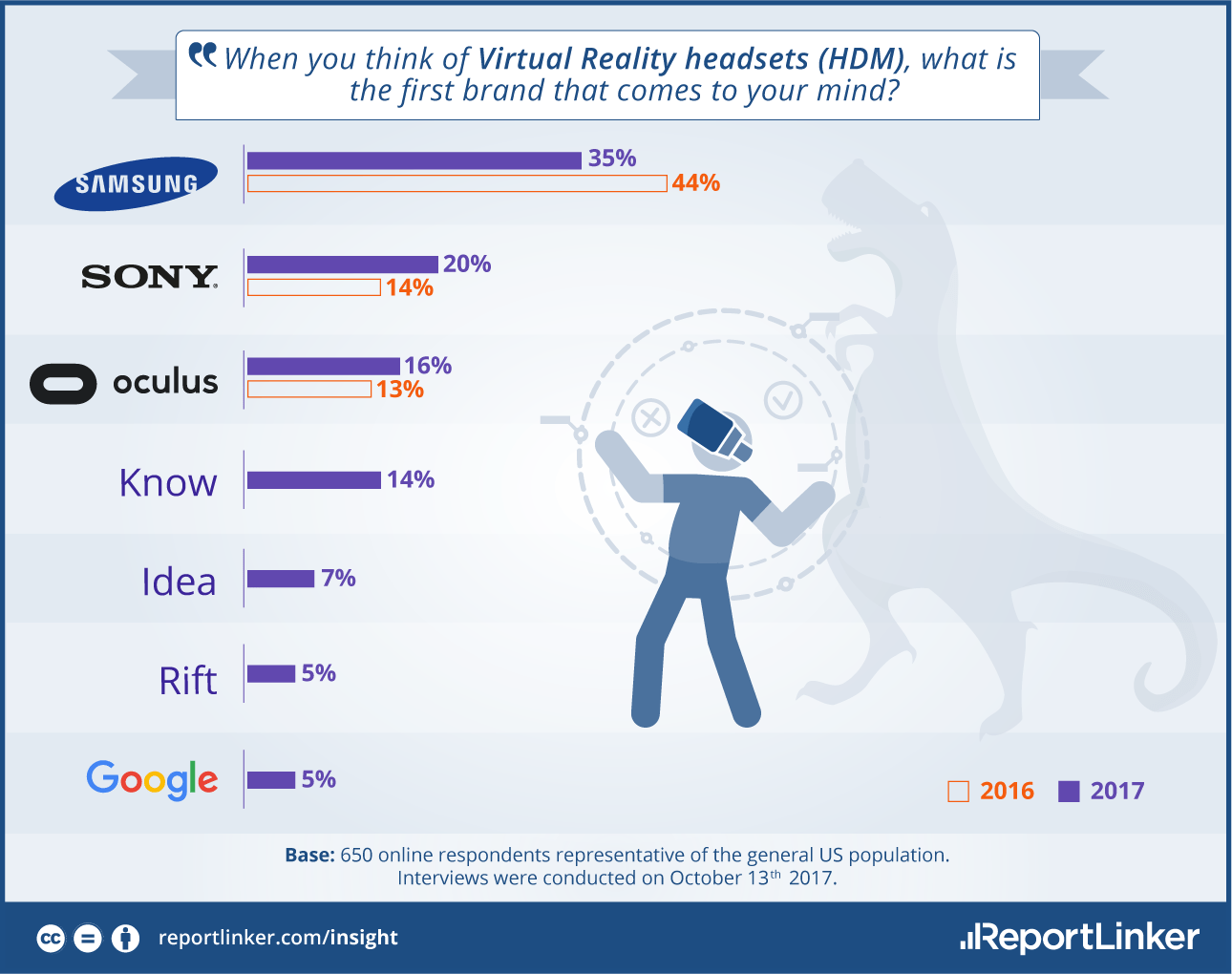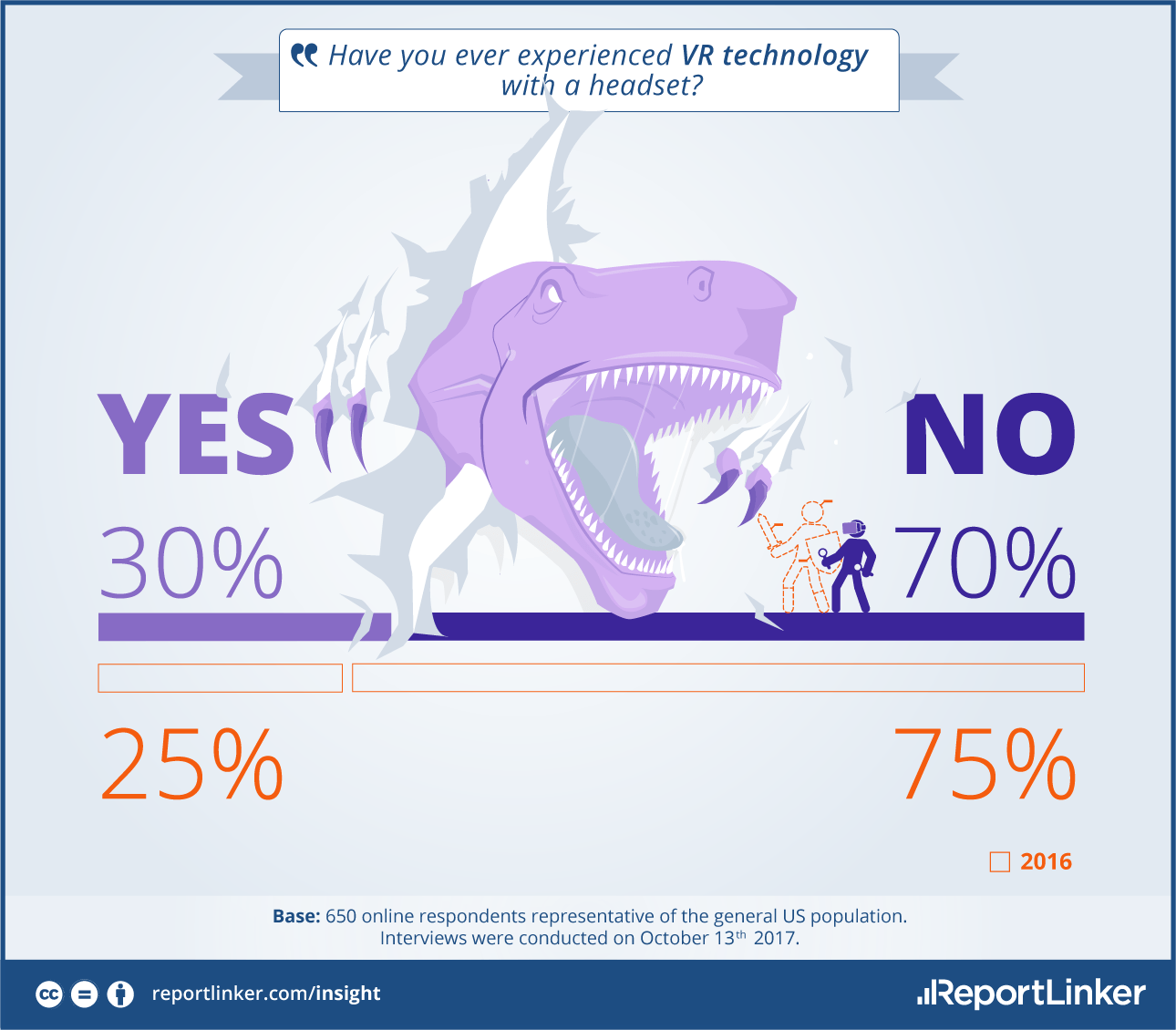According to research recently conducted by ReportLinker involving 650 online US respondents, virtual reality (VR) technology’s appeal is growing. Indeed, market forecasters are anticipating the VR market to reach US $30 Billion within the next five years and to grow at an astounding CAGR of 55%.
For now, the area where VR is making the most inroads into people’s awareness is in video gaming. Virtual reality arcades began in Asia and are now slowly but surely becoming ever more available and popular in the United States. In these arcades, instead of going from machine to machine as in the “old” days, gamers go from VR headset to headset. While VR is serious technology, gaming is a fun and stimulating way of getting a wider audience used to it.
But even with the rise of these arcades, less than 5% of Americans have chosen to adopt VR HMDs (Head-Mounted Displays). This is in spite of the fact that since ReportLinker’s last survey about VR conducted in January, 2017, there has been a 14% increase (from 22% to 36%) in the number of respondents who are confident enough in their knowledge of VR that they feel they can adequately explain it to a friend who is unfamiliar with the technology.
Americans who have used an HMD have a highly positive perception of VR technology, with 84% of them saying that they are positive-minded about it. On the other hand, those who have yet to actually try on an HMD seem to be losing some enthusiasm for VR. Just 76% of these respondents have a positive take on the technology, which is down from 83% according to research that ReportLinker conducted in 2016.
Among brands, Samsung continues to be the leader in people’s awareness. In this latest survey research, 35% of respondents first thought of Samsung when they were asked to think of a VR brand. However, Samsung’s dominance is diminishing, as 44% of respondents first thought of that company in 2016 research. Both Sony (20%) and Oculus (16%) are catching up with Samsung in the general consumer’s awareness of VR brands.
The vast majority of consumers still have not experienced VR with a headset. For brands to reach more buyers, they ought to focus their marketing efforts on encouraging people to think positively about wearing an HMD. Many people may have negative views of HMDs rooted in the early days of the technology in the mid-1990s when the headsets were significantly heavier and likened by skeptics to “wearing two TVs strapped onto your eyes”. It seems that if brands focus for now on developing VR gaming technology, they have a good chance of overcoming the negative image of the HMD, which is critical to getting the general consumer interested in buying.
Find a Home-Based Business to Start-Up >>> Hundreds of Business Listings.





















































